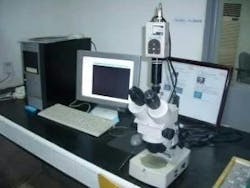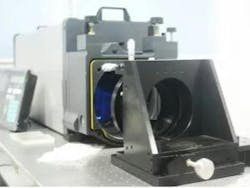Optical Metrology: Precision Dynamics in Multidisciplinary Applications
Optical metrology stands as a formidable and adaptable tool utilizing light to measure object characteristics, finding applications across diverse fields. This article explores the mechanics of optical metrology, its multifaceted applications, and the merits and drawbacks of this extraordinary technology.
What is Optical Metrology?
Operating by exploiting light properties for interaction with the object under scrutiny, optical metrology analyzes the reflected, refracted, transmitted, or absorbed light to extract vital measurements. Employing techniques such as interferometry, speckle pattern analysis, and laser-structured light pattern projection, optical metrology accurately gauges properties like distance, shape, and surface roughness.
- Structured Light Patterns: Projects laser lines or patterns onto the object, creating a 3D map based on the deflection of the pattern or laser line.
- Speckle Pattern Analysis: Examines light scattering on a rough surface to determine roughness, enhancing surface quality assessments.
- Interferometry: Utilizes multiple light beams to create interference patterns, enabling precise distance measurements between the object and the measuring device.
Advantages and Disadvantages of Optical Metrology
Being a non-contact measurement technique, optical metrology minimizes the risk of damage to the object or part. It provides highly accurate measurements swiftly, making it valuable for applications requiring precision and speed. However, it is sensitive to environmental changes, making accurate measurements challenging in certain conditions. There may be limited range depending on the method used, hindering measurement of large objects. Additionally, the equipment can be expensive, limiting accessibility for some applications or industries.Applications of Optical Metrology
This measuring technology finds applications in various fields:
- Manufacturing and Engineering: Ensures quality and accuracy of parts, measuring dimensions, and surface roughness.
- Biomedical and Life Sciences: Measures and analyzes physical properties of cells, tissues, and organs.
- Archaeology and Conservation: Accurately measures and documents cultural heritage objects, creating 3D models of artifacts.
- Aerospace and Defense: Measures the shape and surface quality of parts and components.
In-House Optical Testing at Shanghai Optics
Shanghai Optics employs state-of-the-art metrology equipment, including the Zygo Verifire Interferometer and Trioptics MTF test stations, ensuring precise readings of surface accuracy and comprehensive infrared wavelength MTF measurements for high-precision lenses.
In conclusion, optical metrology, with its precision, non-contact nature, and speed, emerges as a valuable asset across industries. Its critical role in quality control, research, and development, coupled with advancing technology, solidifies its position as an indispensable tool for accurate and reliable data in various fields.

